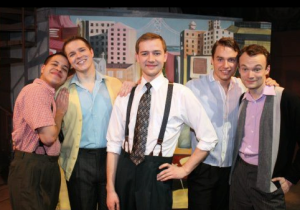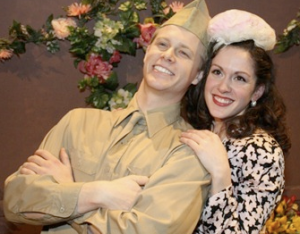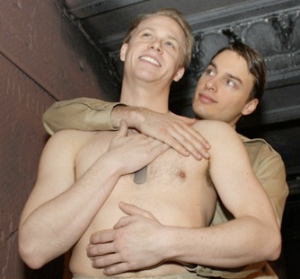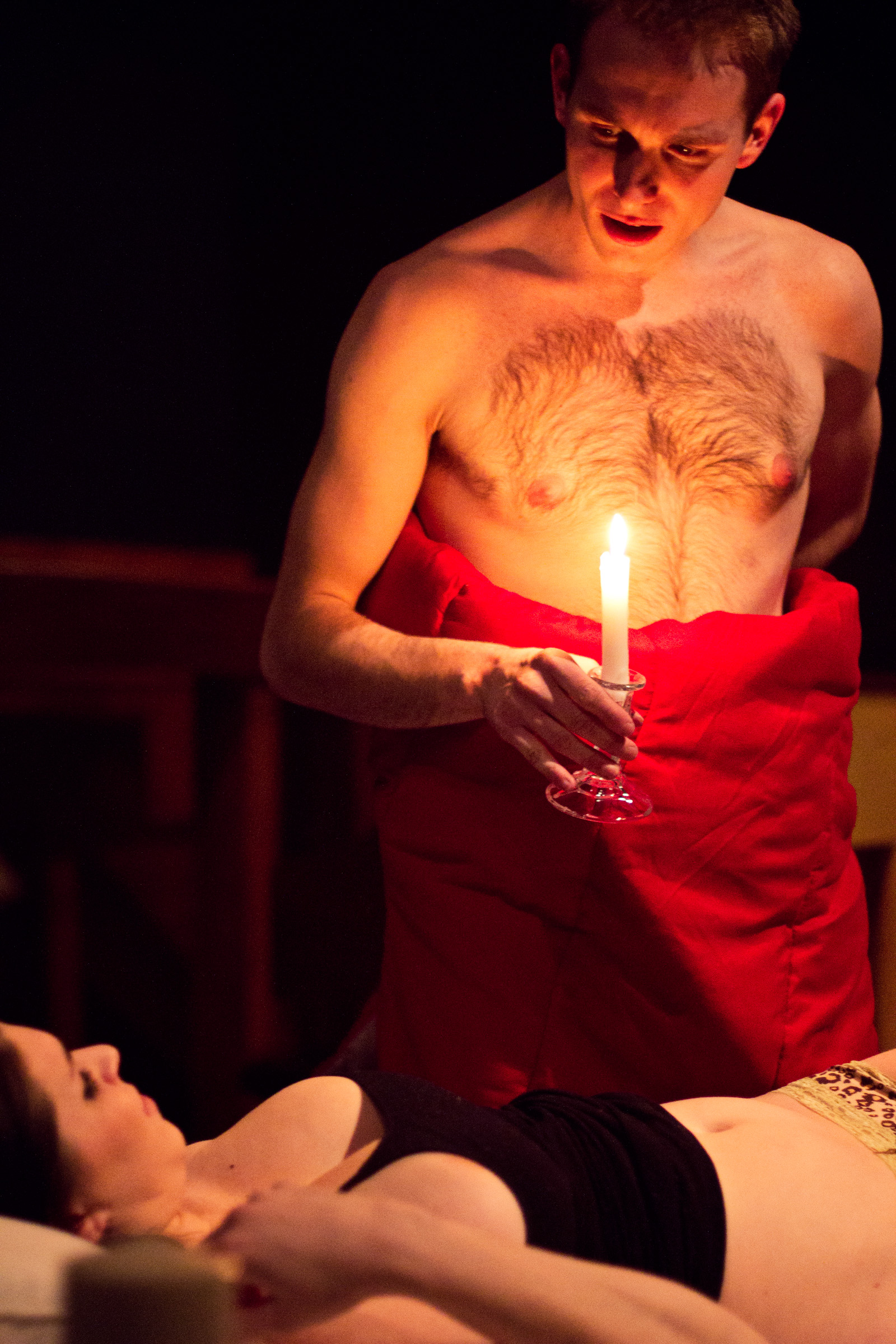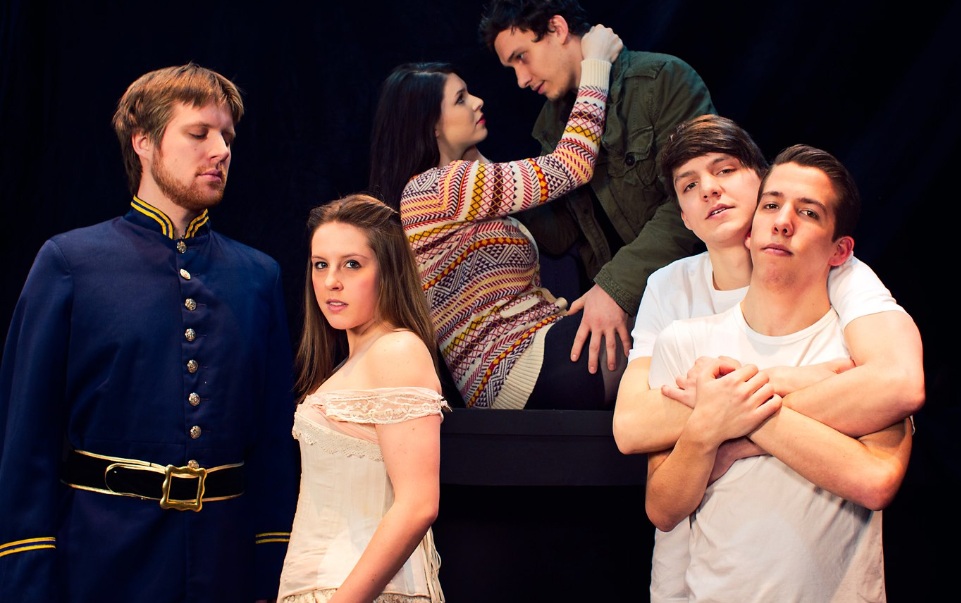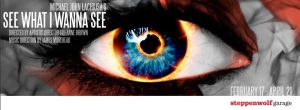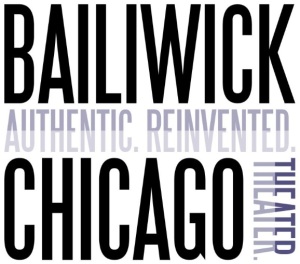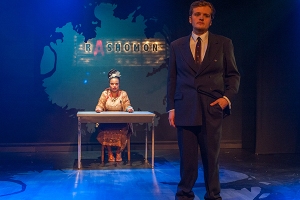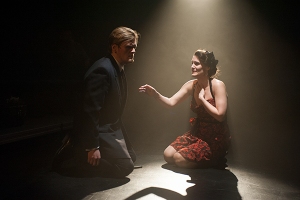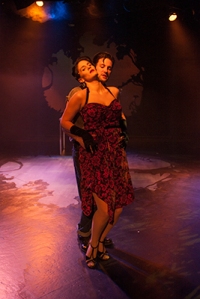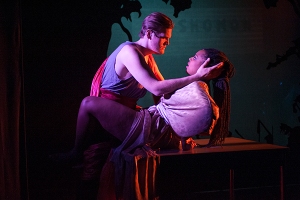Under a Rainbow Flag
WHAT: Under a Rainbow Flag
WHEN: March 21 – April 21, 2013 (schedule)
WHERE: Profiles Theatre – The Main Stage (4139 N. Broadway Ave.)
RUNTIME: 2 Hours and 30 minutes, with a 10 minute intermission
WHO: Pride Films and Plays
PRICE: $15-25
OUR RATING: Do It!
A meeting on a train for four gay soldiers during World War Two is the starting point for Leo Schwartz’s new musical Under the Rainbow Flag, based on the true story of veteran Jon Phillips. A tale of self-discovery, good humor and utter tragedy, we journey west to San Francisco and onto the war-torn shores of East Asia, exploring the many different paths these remarkable men take.
With show-stopping tunes and wonderfully composed ensemble pieces, Under the Rainbow Flag tells the very real story of servicemen who fought and died for a country which denied and opposed their sexuality, and for this it should be celebrated as an original and heartfelt triumph.
Alicia: The production of Under a Rainbow Flag couldn’t have better timing. The show was submitted as part of Pride Films and Plays’ Great Gay Play Contest (2012), and now the next installment is right around the corner with Gay Play Weekend and the 2013 Great Gay Play Contest showing its fierce talent at Center on Halsted from May 17 to 19.
Since last year’s contest, Under a Rainbow Flag has nurtured and grown, with a staged reading at Center on Halsted last May, and with an overwhelming response to their Indiegogo project, raising over $5000. And now, after months of work, it has matured and found its place on Uptown’s Main Stage.
Under the Rainbow Flag is a poignant, fast-paced soiree that really does take you back to those days of radio plays, big bands and rhythm & blues, and the prevalence of WWII propaganda infiltrating the modern lives of American civilians and soldiers alike. Set Designer Ashley Ann Woods works magic on the production, with WWII vintage print posters lining the top level of the stage, magnificently painted background drops of San Francisco on the main level, and even her trolley-track work-of-art flooring. She works hand-in-hand with lighting designer Garvin Jellison to move the audience effortlessly from setting to setting, with my favorite moments being spotlights against a Pearl Harbor poster (and did I detect an outline of a radio?) while the radio news played to provide a bit of historical background to the theatrical mix.
But the talent didn’t stop on the tech side, with director and Pride Films and Plays Executive Director David Zak showing his directorial prowess with a melange of smart, risky and just-plain-fun choices. Knockout performances were seen from James Nedrud (Russell) and Jordan Phelps (Stefano), who may not have been the main characters, but were really the ones who carried the show for me. Nedrud has obviously played the musical scene before (his rendition of “The Army’s Handing Out Medals” with fellow actor Luis Herrera (Bender) was a highlight of the night), and I would love to see him elsewhere on stage. He knows how to play to a crowd and how to really work Tracy Strimple’s choreography. Meanwhile, Phelps has a sincere and provocative charm which adds complexity to his bitingly raw performance.
 Adam: The presence of gays in the military during World War Two is not a subject that is covered much in the history books. While technically banned from service in the 1940s, the imperative for fighting men meant that gays were indeed admitted, albeit while keeping their sexuality low profile. Indeed, the recent repeal of DADT, as well as the cases currently before the Supreme Court, reminds us that we are still in the midst of this discrimination, and have only just begun taking steps towards equality. Under a Rainbow Flag starts to illuminate some of this history for the first time, an extremely important service.
Adam: The presence of gays in the military during World War Two is not a subject that is covered much in the history books. While technically banned from service in the 1940s, the imperative for fighting men meant that gays were indeed admitted, albeit while keeping their sexuality low profile. Indeed, the recent repeal of DADT, as well as the cases currently before the Supreme Court, reminds us that we are still in the midst of this discrimination, and have only just begun taking steps towards equality. Under a Rainbow Flag starts to illuminate some of this history for the first time, an extremely important service.
Truly marvelous and catchy numbers (especially “Queens”, which is perhaps the most riotously fantastic piece in the whole work) create a sense of connection and camaraderie between audience and actors. Full of energy and life, we are treated to a full array of experiences from the openly camp, to the closeted (but hilarious) reactions to straight servicemen. Codes are an essential part of life for these men, who must balance between the ideal and reality, which is also more brutally reflected in the wartime setting, replete with its own codes and ciphers, even if they are for more grisly purposes.
With expert music direction by Robert Ollis, seated behind the keyboard in full military uniform, a perfect score beams forth that makes us laugh as well as reflect on the wider, more serious issues that it raises. An important piece of theatre for our times, I would highly recommend you pick up a ticket and get a front row seat.
Final Thoughts: With Under the Rainbow Flag, Pride Films and Plays continues to foster compelling and talented work that speaks to the LGBT community and beyond, and we’re thrilled to see such a commendable piece of work find its footing in the performing arts and have such great success in a short period of time.
